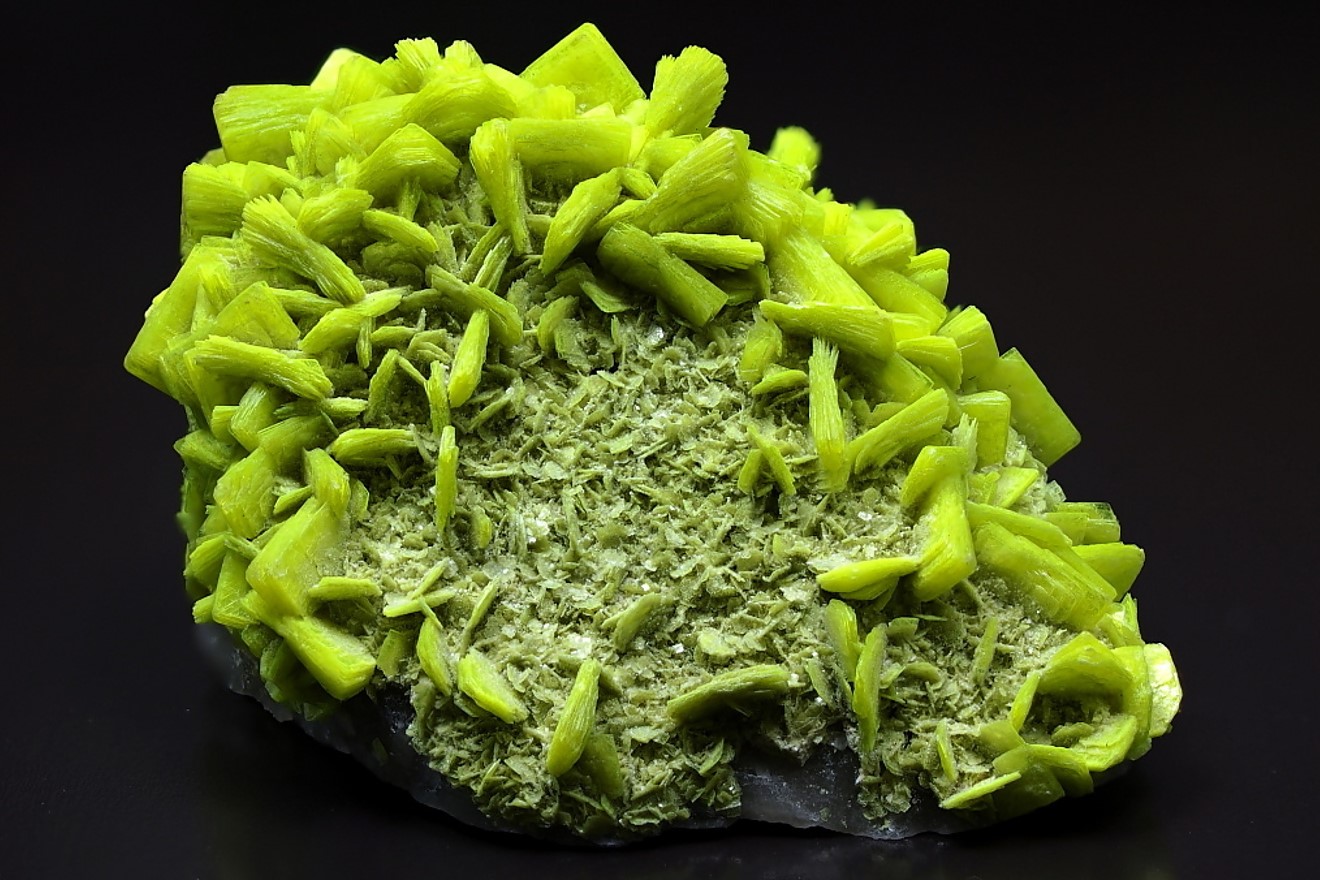
Autunite is a fascinating mineral that captures the interest of geologists and collectors alike. This bright yellow-green mineral, known for its striking fluorescence under UV light, is composed of hydrated calcium uranyl phosphate. Autunite forms in the oxidation zones of uranium deposits, making it a significant indicator of uranium presence. Its unique crystal structure and vibrant color make it a favorite among mineral enthusiasts. However, due to its uranium content, handling Autunite requires caution. This mineral not only tells a story of geological processes but also plays a role in scientific research and environmental studies. Ready to learn more intriguing facts about Autunite? Let's dive in!
Key Takeaways:
- Autunite is a vibrant yellow-green mineral with unique properties, used in nuclear fuel production and geological studies. Handle with caution due to its radioactive nature.
- Autunite's presence in popular culture and environmental impact raises awareness about its significance and the need for responsible mining and disposal practices.
What is Autunite?
Autunite is a fascinating mineral known for its vibrant yellow-green color and unique properties. It is a hydrated calcium uranyl phosphate mineral that forms in the oxidation zones of uranium deposits. Let's dive into some intriguing facts about this mineral.
-
Autunite was first discovered in 1852 in the town of Autun, France, which is how it got its name.
-
This mineral is known for its striking yellow-green fluorescence under ultraviolet light.
-
Autunite is primarily composed of uranium, making it a significant ore for uranium extraction.
-
The chemical formula for autunite is Ca(UO2)2(PO4)2·10-12H2O.
-
It typically forms tabular or platy crystals, often found in radiating clusters.
Physical Properties of Autunite
Autunite's physical properties make it a unique and easily identifiable mineral. Here are some key characteristics:
-
Autunite has a Mohs hardness of 2-2.5, making it relatively soft.
-
Its specific gravity ranges from 3.1 to 3.2, which is considered average for minerals.
-
The mineral exhibits perfect cleavage in one direction, meaning it can easily split along a flat plane.
-
Autunite has a vitreous to pearly luster, giving it a shiny appearance.
-
It is translucent to transparent, allowing light to pass through it to varying degrees.
Formation and Occurrence
Understanding how and where autunite forms can provide insight into its geological significance.
-
Autunite forms in the oxidation zones of uranium deposits, where it precipitates from uranium-rich solutions.
-
It is commonly found in sedimentary rocks, particularly in sandstone and shale.
-
Significant deposits of autunite have been found in the United States, particularly in the states of Colorado, Utah, and New Mexico.
-
Other notable locations include Portugal, the Czech Republic, and Kazakhstan.
-
Autunite can also form as a secondary mineral in hydrothermal veins.
Uses of Autunite
Despite its radioactivity, autunite has several practical applications.
-
Autunite is an important ore of uranium, used in the production of nuclear fuel.
-
It is also a popular mineral specimen among collectors due to its vibrant color and fluorescence.
-
In the past, autunite was used as a source of radium for medical treatments.
-
The mineral's fluorescence makes it useful in geological studies for identifying uranium deposits.
-
Autunite can also be used in educational settings to demonstrate the properties of radioactive minerals.
Safety and Handling
Due to its uranium content, handling autunite requires caution. Here are some safety tips:
-
Autunite is radioactive, so it should be handled with care to avoid prolonged exposure.
-
It is recommended to store autunite specimens in a well-ventilated area, away from living spaces.
-
When handling autunite, use gloves to minimize direct contact with the skin.
-
Avoid inhaling dust from autunite, as it can be harmful if ingested or inhaled.
-
Always wash your hands thoroughly after handling autunite specimens.
Interesting Facts About Autunite
Here are some additional fun and lesser-known facts about autunite:
-
Autunite can dehydrate over time, losing its water content and altering its appearance.
-
The mineral's fluorescence is due to the presence of uranium, which absorbs UV light and re-emits it as visible light.
-
Autunite's vibrant color can fade when exposed to sunlight for extended periods.
-
The mineral can be synthesized in laboratories for research purposes.
-
Autunite is often associated with other uranium minerals, such as torbernite and uranophane.
Autunite in Popular Culture
Autunite has made its way into various aspects of popular culture, from literature to media.
-
Autunite has been featured in several mineral and geology-themed exhibitions around the world.
-
It has appeared in educational documentaries about radioactive minerals and their properties.
-
Some science fiction novels and movies have referenced autunite due to its radioactive nature.
-
Mineral collectors often showcase autunite in online forums and social media groups.
-
Autunite has been used as a plot device in mystery novels involving radioactive materials.
Autunite and the Environment
The environmental impact of autunite mining and its presence in nature is a topic of concern.
-
Mining autunite can lead to the release of radioactive dust and contamination of nearby water sources.
-
Proper disposal and containment of autunite mining waste are crucial to prevent environmental damage.
-
Autunite can naturally occur in areas with high levels of uranium, posing a risk to local wildlife and vegetation.
-
Researchers are studying ways to safely extract uranium from autunite while minimizing environmental impact.
-
Efforts are being made to rehabilitate former autunite mining sites to restore natural habitats.
Final Glimpse at Autunite
Autunite, a fascinating mineral, holds a unique place in both geology and history. Its radioactive properties make it a subject of intense study, especially in the field of nuclear science. Found in various parts of the world, this mineral is not just a collector's item but also a key player in understanding uranium deposits. Its vibrant yellow-green color makes it easily recognizable, adding to its allure. While handling autunite requires caution due to its radioactivity, its contributions to science and industry can't be overlooked. Whether you're a geology enthusiast or just curious about the natural world, autunite offers a glimpse into the complex interplay of minerals and elements. Keep exploring, stay curious, and who knows? You might just uncover more intriguing facts about this remarkable mineral.
Frequently Asked Questions
Was this page helpful?
Our commitment to delivering trustworthy and engaging content is at the heart of what we do. Each fact on our site is contributed by real users like you, bringing a wealth of diverse insights and information. To ensure the highest standards of accuracy and reliability, our dedicated editors meticulously review each submission. This process guarantees that the facts we share are not only fascinating but also credible. Trust in our commitment to quality and authenticity as you explore and learn with us.


